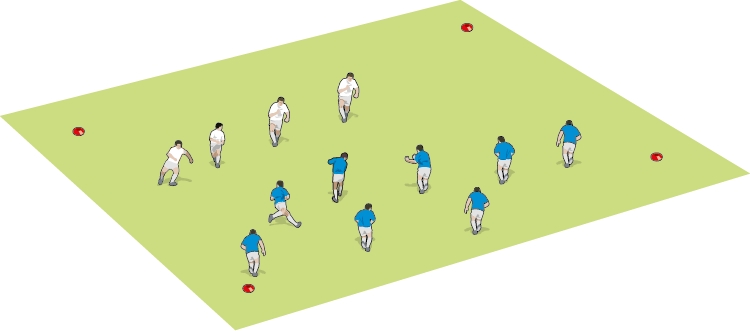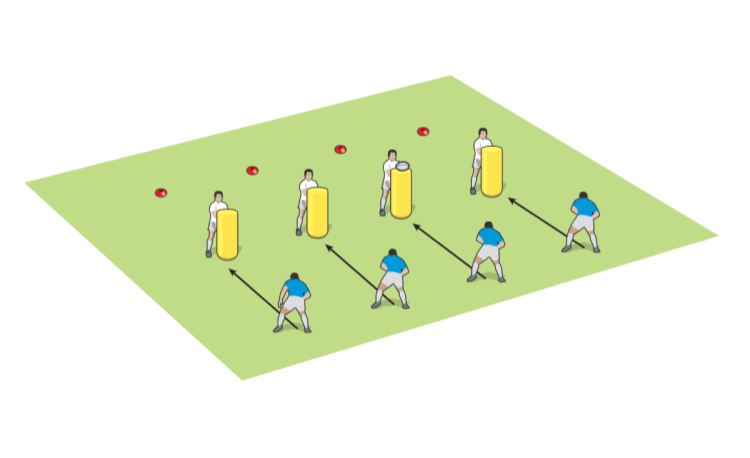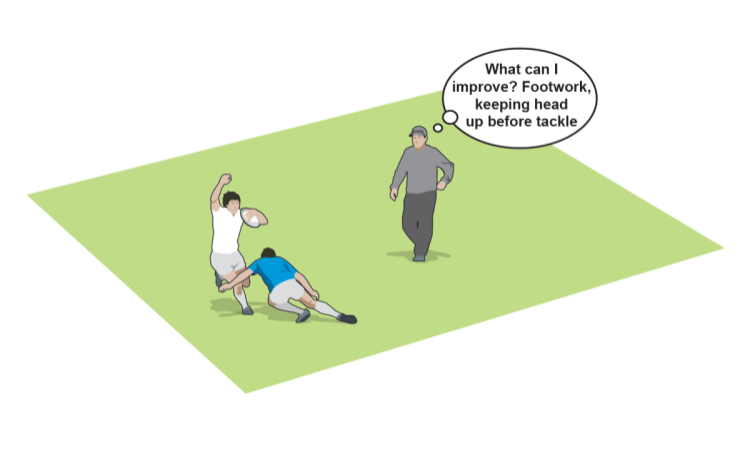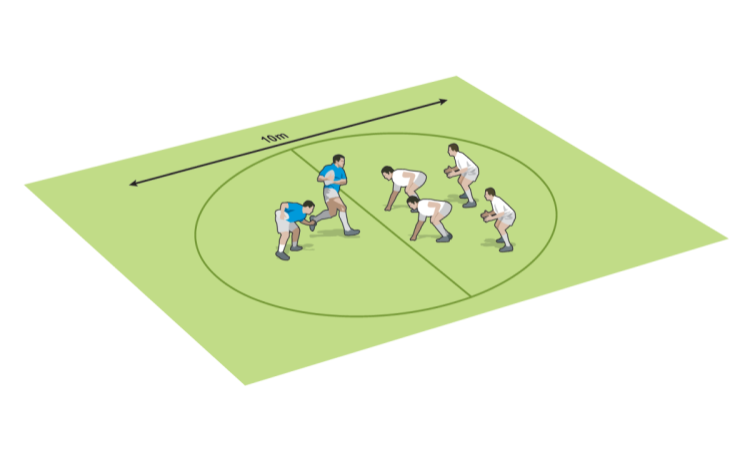You are viewing
1 of your 2 free articles
Drift defence session
Defenceby Russell Bolton
Use this scenario to create decision-making opportunities around attacking the edge of a defence. The edge is where the end of the line of defenders finishes.


Play a game of touch with two equal sides. Tell the teams that they will score points based on good decision making in defence.
Award a point if the defensive team have fewer number than the attack on one side of the pitch and they can still manage the space to make a touch out on the sideline.
Award a point if the defence have numbers equal to or greater than the attack and they can apply pressure and make a touch beyond the gainline.
You may want to award a bonus point or turnover possession if they can combine two phases of defence together. For example, they drift to make a touch out wide and then apply pressure to get a touch beyond the gainline off a wide breakdown.
WARM UP

- Set up a square with one defender in the middle.
- Four attackers. Each standing on one side of the square. (For clarification we can call them North, South, East and West).
- On the whistle an attacker from one side (North) attacks to get across to the South side of the square.
- Defender must work their feet and get into a tackle ready position, with two hands on the inside hip of the attacker.
- Once that attacker has gone, the player on the East side immediately goes and tries to get across the square.
- The defender works for one minute with attackers constantly moving across the square.
- Although there may not be a lot of opportunity for the defender to move forward, they should aim to make their last step forward towards the attacking player.
- Focus should remain on the target area at all times. In this example, it’s the inside hip but if we want to work a lower leg tackle then the calves could become the target.
- As the defender gets tired, staying “square” and on the front parts of your feet are crucial.
- The work we do leading into a tackle will determine how successful a tackle we can make.
GAME

- Play an overload attacking game. You want 4-5 defenders against 8-10 attackers.
- The defenders start back on the tryline and kick the ball out towards the attacking team to start the game.
- The attackers will continue to attack until they score a try.
- The defenders get a point for every touch they make on the ball carrier.
- After a touch, the attackers can either offload, go to ground or play through their legs depending on the level of difficulty you want to create.
- If the attacking team make a mistake and the defence get the ball, they can kick the ball into the space behind and carry on. You may want to award additional points to the defence if their pressure led to the mistake.
- Winning team is the group of 4 who can make the most touches before a score.
- This game should give teams confidence that they can cover a large amount of ground for a good length of time when numbers are down.
- They should work hard to stay as a unit. I would reinforce the following principles. Appropriate spacings, appropriate line speed, stay square and connected.
- If they can keep the middle defenders on the inside shoulder of the ball carrier then they should be able to drift with the pass and ,when they have equal numbers, apply more pressure.
GAME: DEFENSIVE DECISIONS
Play a game of touch with two equal sides. Tell the teams that they will score points based on good decision making in defence.
Award a point if the defensive team have fewer number than the attack on one side of the pitch and they can still manage the space to make a touch out on the sideline.
Award a point if the defence have numbers equal to or greater than the attack and they can apply pressure and make a touch beyond the gainline.
You may want to award a bonus point or turnover possession if they can combine two phases of defence together. For example, they drift to make a touch out wide and then apply pressure to get a touch beyond the gainline off a wide breakdown.
Related Files
Vol-2-Issue-029-R-Bolton-drift-defence-session.pdfPDF, 454 KB
Newsletter Sign Up
Coaches Testimonials

Gerald Kearney, Downtown Las Vegas Soccer Club

Paul Butler, Florida, USA

Rick Shields, Springboro, USA

Tony Green, Pierrefonds Titans, Quebec, Canada
Subscribe Today
Be a more effective, more successful rugby coach
In a recent survey 89% of subscribers said Rugby Coach Weekly makes them more confident, 91% said Rugby Coach Weekly makes them a more effective coach and 93% said Rugby Coach Weekly makes them more inspired.
Get Weekly Inspiration
All the latest techniques and approaches
Rugby Coach Weekly offers proven and easy to use rugby drills, coaching sessions, practice plans, small-sided games, warm-ups, training tips and advice.
We've been at the cutting edge of rugby coaching since we launched in 2005, creating resources for the grassroots youth coach, following best practice from around the world and insights from the professional game.
More from us
© 2023 Rugby Coach Weekly
Part of Green Star Media Ltd. Company number: 3008779
We use cookies so we can provide you with the best online experience. By continuing to browse this site you are agreeing to our use of cookies. Click on the banner to find out more.












